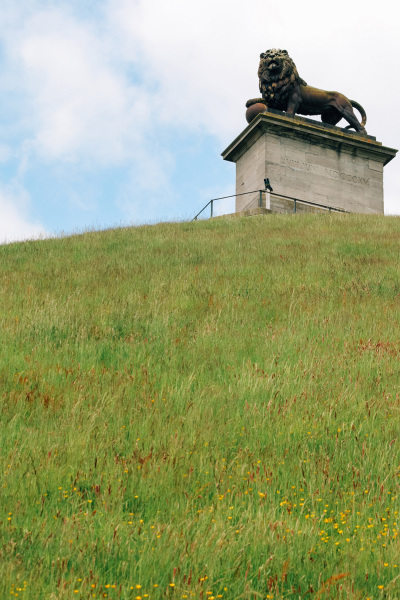Off-the-beaten-path in French-speaking Belgium

Americans who know anything about Belgium know it as the home of Tintin, fries and waffles.
More astute travelers know it has infamously gone hundreds of days without a government after national elections. Some may even know the crossroads of Europe converge in Brussels, which does double-duty as the Belgian and European Union capitals.
Yet there is so much more to discover in this trilingual — Flemish, French and German — country, which is often an afterthought when planning European trips. There is perhaps nowhere more off-the-beaten-path in Belgium than Wallonia, the French-speaking province in the country’s south.
Make Waterloo your first stop. It was here where Emperor Napoleon was once and for all defeated by the Duke of Wellington in June 1815.

I toured the battlefield as well as the visitor center and museum. The huge exhibit of mannequin soldiers wearing historically accurate uniforms and carrying authentic reproductions of period weapons was particularly striking. Be sure to climb the 226 steps to the top of Lion’s Mound, the iconic monument with sweeping views of the battlefield toward the Hougoumont farmhouse, where some of the fiercest fighting took place.
Next up is Mons, a former heavy industrial city that drew attention a few years ago when it was named a European capital of culture.
The biggest legacy from its year in the spotlight is revitalized museums. The François Duesberg Museum is one such museum, although translations into English of its exhibits were noticeably lacking during my visit. Additional sights include the town hall from the 15th century, the UNESCO-listed 285-foot-tall belfry and the Collegiate Church of St. Waudru with its Renaissance-era alabaster sculptures.
Another former industrial age city is Liège, which was an independent state under the Roman Catholic prince-bishop until the French Revolution.
Most visitors arrive at the postmodern train station designed by Spanish architect Santiago Calatrava. An easy 20-minute walk away is St. James the Less Church, which dates to a thousand years.
I had the church with its gigantic Flamboyant Gothic windows — the facades of the south and north walls are practically all glass — to myself during my entire 90-minute visit. The best view is from a hidden gallery between the south transept and high altar that overlooks the chancel. Here I found a somewhat disorganized exhibit full of old liturgical vestments, heraldic emblems, various church fittings and random architectural salvages.
Last but certainly not least is Namur, the provincial capital of Wallonia.
The big draw is the citadel, which was built in the mid-10th century and continuously expanded through the ensuing centuries when this part of present-day Belgium was controlled by competing European powers, including the Habsburgs, Spanish and French Revolutionaries. The view of Namur and the confluence of the Sambre and Meuse rivers from atop the citadel’s walls is most impressive. Another must-see is the collection of ecclesiastical art at the Provincial Museum of Ancient Art.
If you go
Brussels is the ideal base, as day trips by train to Waterloo, Mons, Liège and Namur are super easy.
Hotel Le Plaza, located within walking distance of the Brussels North railway station, is one of those grand old hotels. An alternative is The Dominican, part of Marriott’s boutique Design Hotels brand.
Spires and Crosses is a weekly travel column. Follow @dennislennox onTwitter and Instagram.
Dennis Lennox writes about travel, politics and religious affairs. He has been published in the Financial Times, Independent, The Detroit News, Toronto Sun and other publications. Follow @dennislennox on Twitter.




























